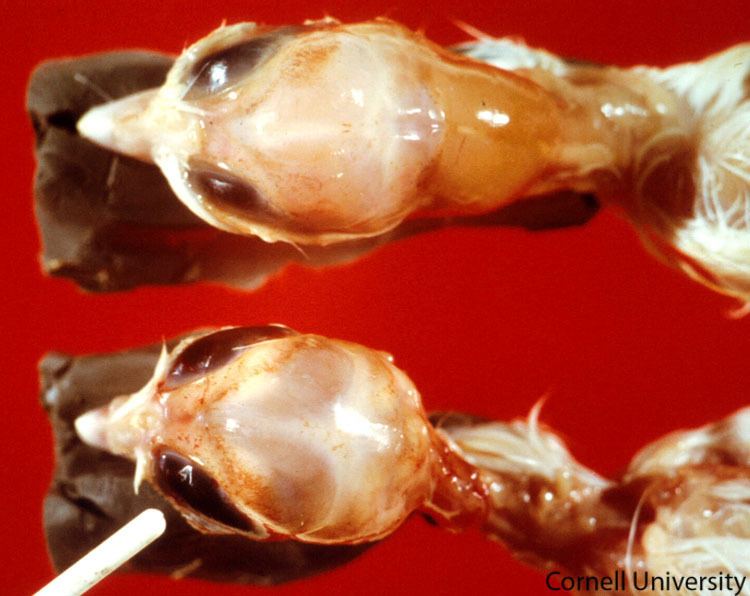Group Group IV ((+)ssRNA) Family Picornaviridae Scientific name Tremovirus Rank Genus | Species Tremovirus A Higher classification Picornavirus | |
 | ||
Similar Picornavirus, Teschovirus, Kobuvirus, Chicken anaemia virus, Gallid herpesvirus 1 | ||
Avian encephalomyelitis
Tremovirus, also known epidemic tremor, is a virus genus belonging to the Picornaviridae family. The genus has one species, Tremovirus A, which is also called Avian encephalomyelitis virus. The first avian picornavirus to have its genome sequenced, it causes epidemic tremor in chickens.
Contents
Tremovirus is of economic importance to chicken farmers because it causes a drop in egg production in laying hens, and neurological diseases in chicks less than three weeks old.
The domestic host is the chicken, but it can also infect partridge, turkeys, quail, guineafowl, and pheasants. It has a worldwide distribution.
The virus can be spread by both vertical and horizontal transmission. It is not a zoonosis, meaning that it cannot be transmitted to humans.
Symptoms and diagnosis
Neurological signs such as ataxia, tremor of the head and neck, drooping wings, weakness, paralysis, exercise intolerance and blindness are seen in chicks less than 3 weeks old. In laying hens the disease causes a temporary reduction in egg production.
Antibodies can be detected using an ELISA or virus neutralisation. Definitive diagnosis of the disease is by histopathology or virus isolation.
Treatment and control
Currently, no treatment is available, but chicks that survive infection are immune. Control is achieved by vaccination of the flock. The vaccine can be administered via inoculation of the wing web, by drinking water or eyedrops, though eyedrop administration is much more effective. Mortality ranges from 25–60% and surviving animals are considered nonprofitable.
